1987: The Mop Up & Awards
Hi friends, I’ve been working my way through the year in wrestling that was 1987. Around March I basically stopped trying to keep up with the various single matches I was eager to get in. So, at the year’s end, I’m now in a spot where I want to watch all those little extra bouts on my massive fucking spreadsheet. So, let’s delve in shall we, as I create myself a 1987 comp tape.
Match 1: (March 14, 1987. WWC/Capitol Sports. Guaynabo, Puerto Rico)
Cage Match
WWC Universal Heavyweight Championship
Carlos Colon (c) vs. Stan Hansen

A weird set up for this one with there being no floor seating whatsoever. Everyone is up in the bleachers, and they are loud as fuck. These two had themselves a feud with a series of violent matches going back to the previous October. This is the end of it. There’s buckets of hate and quite a lot of blood. Carlos gets all fired up when he sees Stan is busted and the crowd is so freakin’ loud. They are into this. Hansen is a guy I always liked because his strikes seem so wild, which was apparently because he was so short-sighted, he had to make sure he was connecting. Stan does a bang up job on the selling here too, collapsing into the ropes and selling the blood loss. A bloodied Stan also does a good job of making his escape from the cage feel like he’s not trying to win the match, but rather get away from Colon. As if during the process of the match, he’s started to fear the Puerto Rican. Colon may not be the best of technicians, but he knows how to fire the crowd up. His leg work in this is barely passable but the crowd are so into it, it doesn’t matter. The thing gets even more heated when a bunch of heels try to break into the cage and the babyfaces run out to even the score. There’s this ridiculously huge brawl on the floor, featuring the entire locker room. It’s so intense I actually miss Colon escaping the cage to join in! Carnage! ***½
Match 2: (March 20, 1987. NJPW Spring Flare up N21. Tokyo, Japan)
IWGP Tag Team Championship
Akira Maeda & Nobuhiko Takada vs. Keiji Muto & Shiro Koshinaka
This is the final of the IWGP League. The titles are vacant. Everyone gets good reactions but it’s clear the crowd favour Muto & Koshinaka. Takada is my guy. He’s a legitimate shooter and most of his work is around big strikes and mat grappling. I love that Muto tries to take him down and Takada takes him to school instead. Koshinaka decides to go striking with Maeda and that doesn’t go well either. As Takada throws Muto with a near perfect belly to belly, it is becoming rapidly apparent that Muto & Koshinaka are in trouble.
Muto can’t use his pace to get out of trouble because every time he tries he gets caught with kicks. Shiro can’t get his patented flying hip attack in either, because Takada counters him into a German suplex. It’s a real victory for technical wrestling. Maeda seems to control effortlessly when he’s in there, but he makes a huge mistake by going for a spin kick in the corner and for the first time Shiro has an opening. Muto still can’t get going and Takada just walks out of the way of a handspring back elbow.
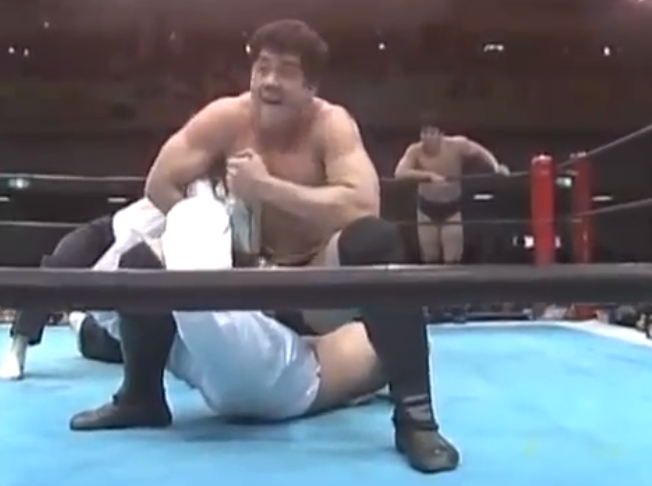
Takada casually slaps on the Sharpshooter, like that’s a normal thing in 1987. Koshinaka takes an absolute shellacking. He’s kicked to bits, thrown around and mistreated and its only Muto’s saves that keep the match going. The flash pin he pulls out on Maeda that leads to the hot tag is amazing. Muto gets the moonsault but Maeda saves. The structure of the match goes out of the window as both teams try and finish. Muto & Koshinaka out of desperation, Maeda & Takada because they’ve set it up.
The finish is brilliant. Takada goes after the Sharpshooter again, knowing he’s worn Koshinaka down. Maeda goes to stop Muto coming in, figuring if he can’t break the submission the match is over. Only Koshinaka catches Takada in a roll up and Maeda is holding Muto back, so he can’t break up the pin. Shiro wins the belts for his team. What a fucking great match this is. ****¼. I loved how the finish went down and how logical the match was until everyone started to panic near the end. I can even live with Takada taking the fall. Just great pro wrestling all round.
Match 3: (April 27, 1987. NJPW Cherry Blossom N18. Tokyo, Japan)
Antonio Inoki vs. Masa Saito
These two had a famous match in 1987, about six months later, where they fought a death match on an island. I’ve seen it, and it’s nearly 2 hours long. I wouldn’t recommend it.

I’ve never been a big Inoki fan. Just putting that out there. He did keep himself relevant and a top guy in his own promotion, whereas Baba knew when to step back in AJPW. That booking hurt NJPW in the early 90s, in my opinion, where AJPW talent had pushed ahead as main event stars. I’ll see how it feels when compared head to head. At this point, I prefer NJPW because of the shooters they had and Inoki is an extension of that.

Saito turns up here prepared and controls Inoki with basic holds, using his superior upper body strength. Riki Choshu is in the audience so Saito slaps on the Scorpion Deathlock. Inoki’s escape is beautifully done, switching his position so he’s able to slide between Saito’s legs and escape. Saito isn’t taking no for an answer and goes back to it. Even if he can’t get Inoki to tap out, he’s certainly wearing down the legs and back.
The more I see of Inoki’s booking, the more it feels like the winner of a match gets their ass kicked for the entire match. That’s how both guys get over. One dominates, the other wins. Saito beats the piss out of Inoki here. I’d say Saito has 18 of the 26 minutes on top. It only ends when Inoki declares he’s had enough of this bullshit and demands the ropes be taken down. Antonio Inoki’s BLOODSPORT!
A baffled Saito gets run into the ring post, bleeds all over the place and Inoki goes to town on him. The match switches gears in tremendous fashion. Saito beats Inoki up with a pair of handcuffs. They end up cuffed together, there’s blood everywhere. Saito gets knocked out and Inoki continues to punch his face in.
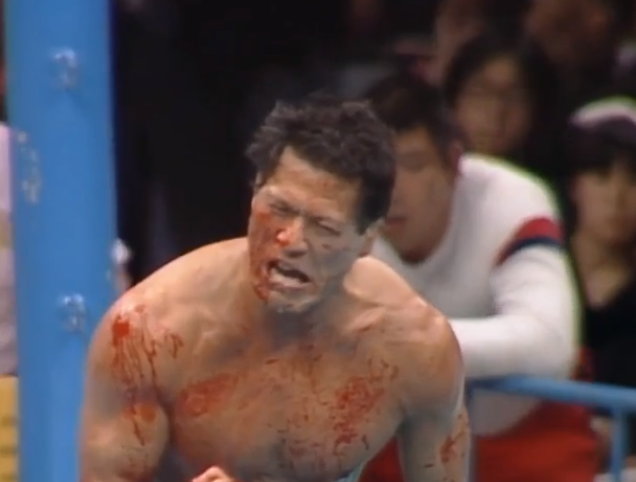
Jesus. Hase throws the towel in as Saito cannot defend himself. The referee ignores it. “It’s over when he’s dead”. Hase ends up having to drag Inoki off as he continues to pound on the already dead Saito. Man, this was brutal. It’s a decent technical match but I was not prepared for how it changed gears in the last five minutes. ****
Match 4: (April 27, 1987. CWA Mid-South Coliseum, Memphis, Tennessee)
Cage Match
Hair vs Hair
Jerry Lawler (c) vs. Austin Idol
This feud has been going on for ages. The AWA Southern title, which Lawler beat Idol for a week ago, is also on the line. Idol has promised to refund everyone in the building if he doesn’t beat Lawler and shave him bald. Idol’s manager here is Paul E. Dangerously and this is the very start of his career and the first incarnation of the Dangerous Alliance. If I’d have managed a stable, which might have happened, you never know, it would have been called the Furious Alliance. I even thought up a little FA anarchy logo for it.
The CWA cage is something to behold. It’s nowhere near the ring and is more like the Hell in a Cell. It allows them to work around the ring and still maintain the brutality of a cage match. Lawler’s cartoonish overselling style was always at odds with Memphis and the brutal, bloody matches they had in that territory. Hey, he was over though. The reactions he gets here are insane.
Memphis wrestling probably reached the peak of its popularity in 1987. The TV was very popular among tape traders. I’ve seen a lot of Memphis from the mid 80s. It was certainly entertaining. Idol goes ahead of piledrives the referee here. This allows Lawler to get a visual pin from a roll up, and another roll up, and a piledriver of his own.
Just when it seems Lawler will win, Tommy Rich jumps out from under the ring, where he’s been hidden the whole time, and the Dangerous Alliance is formed! Well, the first version of it anyway. Lawler loses the match, the title and his hair. Now this is a territory that’s not afraid to piss off the fans and send them home angry. I respect it. They should have done Lawler a favour and shaved off his shit beard while they were at it.
Match 5: (May 4, 1987. CWA. Memphis, Tennessee)
AWA World Championship
Nick Bockwinkel (c) vs. Jeff Jarrett
Jarrett is about a year into his career at this point and he’s in with an almost retired AWA champion in Bockwinkel. Jeff is some six years away from making his WWF debut. He’s so young here and skinny. He resembles a mop with that shock of blond hair and the rake thin body underneath. This was originally Bock vs. Lawler, but Jerry is off selling the events of the last match, and he’s requested the AWA championship committee look at Jarrett instead.
I’m actually irritated Bockwinkel retired in 1987. He still had plenty to offer. Bockwinkel was a highly skilled technician and could have taught some of these up-and-comers a few tricks. He actually dropped the belt to Curt Hennig the day after this. Then he toured with AJPW and that was it. At least he went out on top, I guess. He looks good here.
They do a sensational sequence here where Jarrett gets the arm and just won’t let go of it. It shows Jarrett’s babyface pluck, and his minor technical gifts at this point. The trouble he then faces, having managed to grab a hold and stick with it, is he doesn’t know how to get from there to having his hand raised. Bockwinkel’s initial panic at being trapped in an armbar subsides as he realises this and slowly, methodically, picks Jarrett apart.
It’s a clever storyline. All Jarrett has left after this is to try and fight, giving his youthful energy a chance to shine. Interesting to see Jarrett’s overblown punches and how he developed them in later years. Bockwinkel outsmarts him, sidestepping a missile dropkick and simply pinning the challenger. Even in his final year in the business Bockwinkel was a stud. This was a good match, well put together and helped develop a young Jarrett into something more than a basic babyface. ***½
Match 6: (June 28, 1987. Tokyo, Japan)
AJW Japan Grand Prix Final
Chigusa Nagayo vs. Dump Matsumoto
This is after Nagayo had lost her hair to Matsumoto and gotten revenge by cutting Dump’s hair in late 1986. Now they’re fighting for glory. Both women go for the quick finish. Nagayo initially with flash pins but Dump also goes after crafty roll ups. After this doesn’t work Dump starts to wear Chigusa down with various holds and submission attempts. Matsumoto isn’t cut out for a technical display, although she can use her power and strength, which Nagayo will happily sell for.
The best moments of the match come from Nagayo’s bumping and creativity. Matsumoto would retire in 1988 and you can kind of see why. The mobility isn’t there. It’s particularly clear in this match where Dump actually wrestles. She doesn’t have the violent crap to lean on. In a way it’s nice to see her work this way. It proves she can go without the smoke and mirrors. Nagayo eventually catches a tiring Matsumoto with a roll up for the win. The pacing on this was gold, but then it’s sub 15:00. ***¾. Matsumoto accepts a handshake afterwards, showing the feud is done. The crowd were very into this.
Match 7: (July 18, 1987. WWA. Los Angeles, California)
Mask vs. Hair
El Hijo del Santo vs. Negro Casas
Well, here we are. An actual lucha match. The first one. El Hijo del Santo, son of the legendary El Santo against Negro Casas. Two absolute stars of the 80s lucha scene. EHDS is only 23 at this point. As someone who doesn’t watch much lucha, the shock of seeing EHDS in there with a commentator is a big one. He’s only 5’6”. I legitimately thought he was bigger, but then I’ve only ever seen him wrestle guys like Eddy Guerrero. It probably doesn’t help him that he’s so young and skinny here.
His work in this is effortlessly good. He’s so smooth. Lucha looks completely different and involves a lot more cooperation than other styles, but they do a good job of making the transition holds look like they could be real.
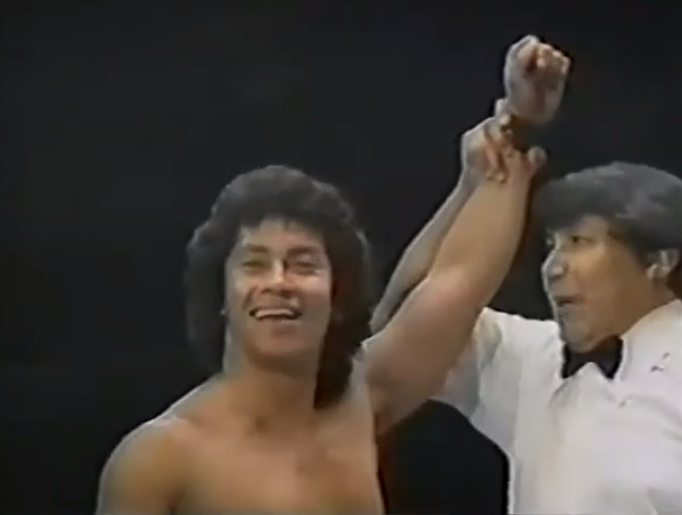
Negro Casas gets a roll up for the first fall. 1-0 to the rudo. He seems happy about it. Mexico is one of the few places that has established a strong cruiserweight, high-flying style. Between them and AJW, that’s where you go for the exciting action in 1987. Both guys take really good bumps. The height they get on backdrops and Casas even throws himself into the ropes and lands on his head. EHDS gets the Surfboard and that’ll do it for 1-1.
Negro Casas is hot, but EHDS doesn’t give a fuck and dropkicks him square in the face to start the third fall. The leg is so straight it would give Bret Hart nightmares. Negro Casas starts getting a wee bit sloppy here, dipping his head too early for spots. Is he tired, or just concentrating? Whatever it is, the sheen comes off his performance, which is unfortunate because the match was going gangbusters. Especially as EHDS goes and hits a tope. YES! I’ve been waiting for so long. The age of magic is dead. The dives era is upon us!
Negro Casas is really selling fatigue and he falls off the ropes. It doesn’t look good enough to look like an accident. Is that deliberate? Who cares? El Hijo del Santo is up top. DIVE TO THE FLOOR. Argh, I fucking love this guy. Negro Casas fights a Camel Clutch as much as he can but it’s not to be. He gives up and loses his hair. This rocked! If Negro Casas had held it together in the last five minutes or so, I’m not sure what my rating would have been. Absolutely sensational though. ****¼
Match 8: (August 31, 1987. Budokan Hall, Tokyo, Japan)
Jumbo Tsuruta vs. Genichiro Tenryu
Oh, let’s fucking go. Up to this point Tsuruta & Tenryu were a tag team. They didn’t wrestle each other, but the top spot in AJPW was on the line and eventually you have to put the top two guys against each other. They started having tag matches against each other a few months ago but now it’s fucking on. You have to remember this is pre-Triple Crown. So, Jumbo has the NWA International Heavyweight belt but the other two belts are in the possession of Stan Hansen, the PWF champion, and Tenryu himself. He’s the NWA United National Champion. So you’ve got three top guys in this promotion and the two top natives are fighting each other for the first time. There’s a lot of jostling for position as to who would become The Man in AJPW.
It’s fascinating how it starts out with both guys going for their biggest moves. Tenryu the Enzuigiri. Tsuruta the jumping knee. As if they know each other really well, so they want to do something surprising. It doesn’t work. While both guys are on friendly terms with each other, the spirit of competition has pushed them head-to-head and neither of them wants to lose here. They both have periods of control and periods of frustration. Tenryu is the first to be disrespectful (I know right, I am *shocked*) by attempting Jumbo’s jumping knee. Jumbo slaps the taste out of his mouth for that and demonstrates one of his own for good measure.
Jumbo tries for an Enzuigiri and Tenryu responds by basically ignoring it. Each man has their own way of showing disrespect to the other. Jumbo has the better of the match. Often using his size to control Tenryu and Genichiro is often limited to counters and being sneaky. However he does land moves in series. One after another to drive home an advantage. He gets a German suplex/Enzuigiri/powerbomb series that looks as if it could have ended the match but Jumbo’s foot lands on the rope.
Tenryu’s peak sneakiness is exposing the buckle on a Jumbo charge so that he runs knee first into the exposed buckle. The timing on that is particularly good. This leads to Tenryu going after the high (right) knee. Jumbo does a great job after that of hitting defensive offence, while continuing to sell his knee. Jumbo’s reduced mobility counts against him and Tenryu is able to catch him by surprise. They are definitely building blocks for future matches. Sadly, they don’t do much at the finish with a badly executed crossbody to the floor failing and Tsuruta gets counted out. ****. This won the Tokyo Sports MOTY, and while I can kinda see that, I don’t think it’s that good. The lack of finish is palpable, and the pacing isn’t great for the first half. There’s a whole lot of ‘feeling out process’ for a 21-minute match. They would go on to better things.
Match 9: (October 20, 1987. Tokyo, Japan)
WWWA World Championship
All Pacific Championship
Yukari Omori vs. Chigusa Nagayo
This is title vs title and the main event of AJW War Dream. Nagayo beat Leilani Kai for her belt earlier in the year. Omori has held the WWWA title since besting Devil Masami for it in summer 1986. Omori is far less famous than Chigusa Nagayo. Yukari is mobile and quick but also has thick legs, showing a lot of lower body power. Thanks to Omori’s mobility, this is a much faster paced match than Nagayo vs. Dump Matsumoto. Nagayo drives the pace of the match and whenever Omori takes over the pace drops dramatically. The logic of this being that both women see that as their best chance of winning. Nagayo using her speed, Omori using her strength.
As the match progresses, we get increased brutality. Nagayo lands on her head off one spot and her revenge is to PLANT Omori with a piledriver. The selling is wildly inconsistent as they sell some strikes like death and others like nothing. Like, Nagayo has a cracking roundhouse, but Omori just doesn’t sell it at all. Chigusa bails out and blades on the floor. The crowd’s reaction to seeing her blood is really something. There’s concern and panic. Omori, stonecold bitch that she is, starts throwing Nagayo around, punching the cut and headbutting her.
Nagayo’s selling here though is elite. Anything near her head and she flops around like a dead body. The crowd is going nuts here. It’s so loud. Nagayo, perhaps as part of the selling, starts doing kicks and nothing but kicks. She sees the first one land and it encourages her to just do more of the same. It looks like desperation offence, caused by the blood loss. Omori, on the other hand, is pulling all manner of shit out to stop her. The double underhook piledriver is brilliant. Nagayo catches her with another big kick though and finishes with a moonsault.
The selling went a wee bit wonky near the finish but the reactions for Nagayo were great and they told a good story of the blood loss, the desperation and the big spots. It could have gone either way, but Nagayo just landed a lucky shot. ****¼
That’ll do it for the mop up. I was looking for some crazy 10 man tags from NJPW but couldn’t find them on the NJPW site, nor anywhere else. A pity because the 1986 ten man elimination tag was one of my favourite matches of the year and apparently, they had ones in 1987 that were up there. I also can’t find the AJW 12-women match from December 1987, which I was also hoping to watch. Never mind. You can’t do it all.
1987: THE AWARDS.
So, here we go, the 1987 Awards. Who are the tops? Who are the flops? Let’s find out.
WRESTLER OF THE YEAR
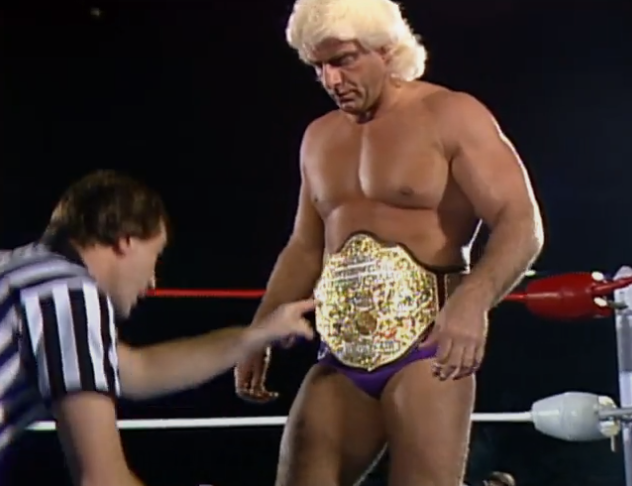
1, Ric Flair (1). This is the first time I’ve been tempted to not pick Flair as #1 and it’s because Randy Savage was so good in 1987, compared to the previous two years, that he has a genuine shout for WOTY. However, you have to look at Flair’s 1987 and I think it’s as unbeatable as usual. The Barry Windham matches, getting 4 stars out of Jimmy Garvin, finishing strong against Ronnie at Starrcade and his presence in the original War Games matches. It’s still Flair.
2, Randy Savage (3). Savage was close to top spot this year. WrestleMania III gives him huge props and after that he went from strength to strength. His matches with Honky Tonk Man, as a babyface, were really good. If you look at the year as a whole, he was doing crazy stuff with Bruno Sammartino early on and had that SNME with Bret Hart near the end. He did great at the first Survivor Series. Best year of Savage’s career to date. Apparently, he was frustrated he could never replicate the Steamboat WM3 match.
3, Nobuhiko Takada (10). I find it hard to put into words how great Takada was and how far ahead of his time he was. A gifted technician, a brilliant striker and one of the foremost shootstyle fighters. Takada would look comfortable in wrestling in 2023. He was that good. This is arguably not even his peak because of the UWFi shows in the next couple of years.
4, Akira Maeda (9). Takada’s partner in crime and one of the top shootstyle guys in the business. An innovator, he took a style that Inoki liked and embellished it into his style. Maeda was a problematic guy but an incredible in ring talent. When he wanted to, he could gel with the traditional wrestling style so perfectly too.
5, Jumbo Tsuruta. The improvement in Japanese wrestling is very prevalent in my 1987 rankings. Jumbo has been bubbling under for the past two years but in 1987, it felt like he stepped up and was a big star. He’s rapidly heading to AJPW Ace territory. His match with Tenryu in August was Tokyo Sports MOTY.
6, Tully Blanchard (7). As with 1986, I thought Tully served as an excellent midcard champion. He was the gateway to Flair. You wanted a series with Flair, you had to work Tully first and get his seal of approval. He was brilliant in tags too in 1987. A real boon to Jim Crockett’s roster.
7, Curt Hennig (8). While Hennig didn’t have the same blowaway match like he did in 1986 with Bockwinkel, he turned into AWA’s ace in 1987. Without him the AWA would have been an even bigger disaster. His in-ring gifts improved throughout the year and by year’s end, I thought he was one of the most valuable workers in any promotion.
8, Barry Windham. What a year for Windham. His matches with Flair turned him into a bona fide stud and top tier guy in the NWA. I don’t fully understand why Barry never reached his potential and why he so often dropped the ball when put in big matches that didn’t involve Flair. 1987 is an eye opening year for it though. A year he went full tilt for 45 minutes with the best wrestler in the world but also stank up Starrcade with Steve Williams.
9, Ricky Steamboat (2). Another guy who had a wild ride in 1987 is Ricky Steamboat. Starting the year as a top guy, winning the IC title in a fantastic match at WM3 and yet fading horribly over the course of the year and being lost in the WWF pack by year’s end. If that’s confusing, 1988 is the end of Steamboat in the WWF with a weird departure after WrestleMania IV, which I still don’t understand.
10, Genichiro Tenryu. This last spot was a tough one. I wanted to include both Tenryu and El Hijo del Santo. As it stands though, I only have ten spots so here’s Tenryu, a guy who improved dramatically in the mid 80s. His late 80s AJPW stuff is probably his career peak, so let’s get on the Tenryu Train before it starts moving too fast.
BEST TAG TEAM
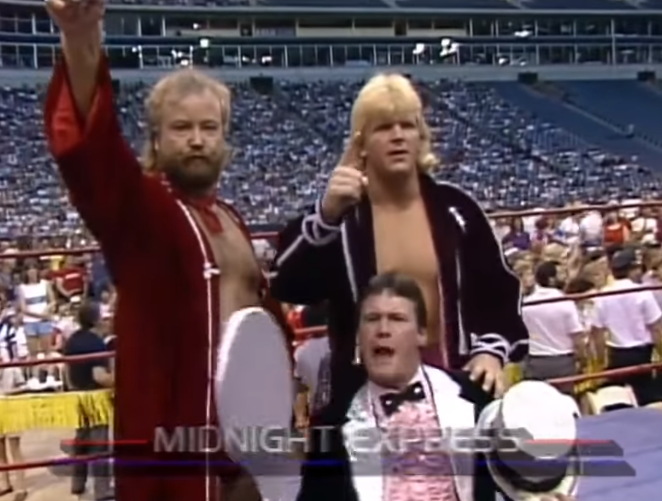
1, Midnight Express (4). For me the classic version of the MXP is Bobby Eaton and Stan Lane. This isn’t a knock on Dennis Condrey (seen above), but Lane got really fucking good as part of the team almost overnight. The addition of Big Bubba as Cornette’s body guard gave them an extra dimension too and this is probably their best year in the business. Again, it’s a shame they got stuck in a shit match at Starrcade or it would have been even more obvious.
2, Hart Foundation. Anvil took his sweet time getting used to Bret’s leadership but once he did this team never looked back. In 1987 Bret Hart got significantly better in the ring too. Leaps and bounds above what he was doing beforehand. They could have pushed him as a singles star right here and now.
3, Rock N Roll Express (3). I keep putting the RNR’s at #3. It’s not intentional. They always feel like a great team but one that needs a great heel team to bounce off and when they clashed with Midnight Express, it felt like MXP were the reason everything clicked. Not to say RNR weren’t one of the best tag teams of the era, because they were, and the babyface sympathy they got was unreal.
4, Can-Am Connection. Tom Zenk, you dozy fuck. I can’t imagine why he walked away from the Can-Am Connection. His team with Rick Martel was near perfect. They set the WWF on babyface fire at the start of the year only for Zenk to quit for money reasons and be replaced by Tito Santana as the team re-branded as Strike Force.
5, Arn & Tully. 1987 is the year Arn & Tully started tagging semi-regularly and won the tag titles. This was thanks to Ole Anderson’s retirement and while they had already been a successful tag team on the side, 1987 is where they started developing as a team.
Shout outs for almost making the list to Strike Force (I just prefer the Can-Ams) and Midnight Rockers.
BEST PROMOTION
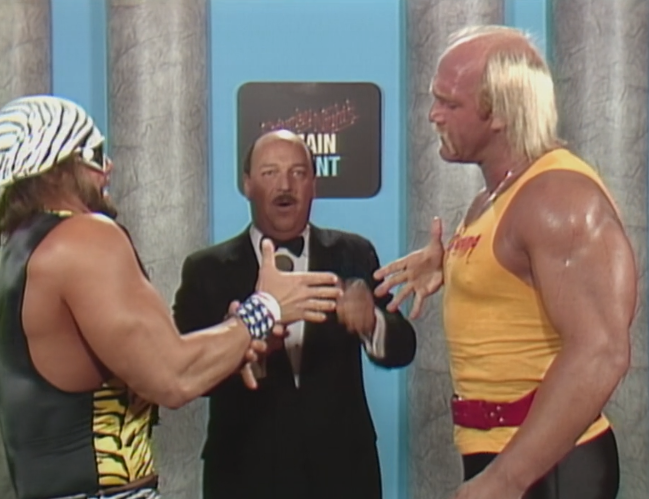
1, WWF (1). I’ve given it to Vince back to back years because the business work done in 1987 is astonishing. The Andre program, the Megapowers. The whole thing was a licence to print money. I seriously doubt I’ll ever give them best promotion two years running again but it’ll be exciting to find out if I do.
2, NJPW (3). New Japan’s ideas were intriguing in 1987. You can skip over the Inoki-Saito Island deathmatch but even attempting it makes them an exciting promotion to watch. They were benefitting from so many talents being readily available here. Riki Choshu came back. Maeda & Takada were firing on all cylinders, Muto was coming good, Inoki was still on top. A veritable treasure trove of talents.
3, AJPW (4). The realisation that the future of the company was pitting Tsuruta against Tenryu is what finally pushed AJPW up into the top three. They should stay cemented into that top three for some time now.
4, AJW. All Japan Women’s was doing some golden stuff in 1987. With short careers for women, it wasn’t always easy to keep the product strong but the defining worker of this era is Chigusa Nagayo. I’m keeping tabs on a ‘best women’s wrestler’ on the sly and she’s won it every time so far.
5, NWA (2). Jim Crockett’s NWA got creative and exciting in the summer with War Games, but Starrcade was a disaster, and the company was struggling creatively.
MATCH OF THE YEAR
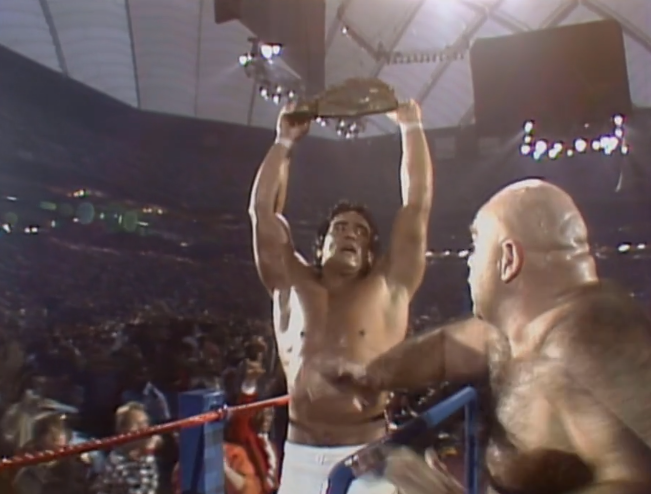
1, Ricky Steamboat vs. Randy Savage (WWF WrestleMania III, March 29, 1987).
2, Ric Flair vs. Barry Windham (NWA, January 20, 1987)
3, Ric Flair vs. Barry Windham (NWA Crockett Cup, April 11, 1987)
4, Shiro Koshinaka & Keiji Muto vs. Akira Maeda & Nobuhiko Takada (NJPW, March 20, 1987)
5, Chigusa Nagayo vs. Yukari Omori (AJW War Dream, October 20, 1987)
BEST MAJOR SHOW
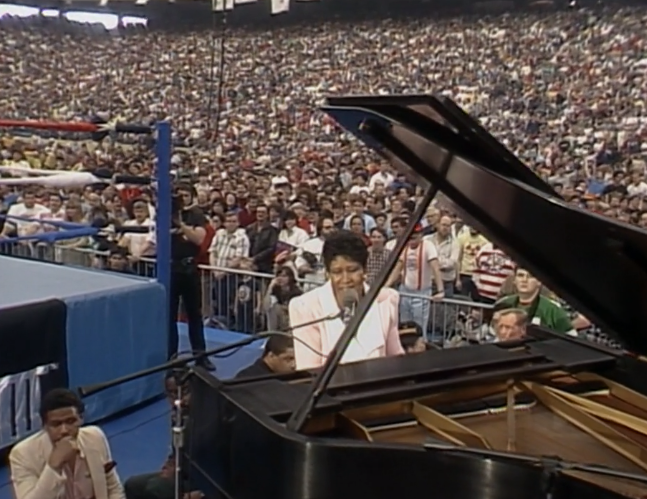
1, WWF WrestleMania III (March 29, 1987). This was a tough choice as both WM3 and the inaugural Survivor Series are excellent shows. The difference, for me at least, is that nothing on SS87 meant anything long term. Whereas WM3 is one of those ‘echoes through the ages’ shows. Hogan-Andre, Savage-Steamboat etc. The best WrestleMania and best WWF supershow to this point. An all-timer. It would be the benchmark of a good WWF show for years and years to come.
2, WWF Survivor Series (November 26, 1987). Four good matches demonstrating a new concept. I love the Survivor Match and there some good examples on the first show. Plus they tried to push new talent and makes things exciting. Survivor Series started out as an experimental show but the experiment was a success, compared to the Wrestling Classic for example.
3, SNME #12. Normally I wouldn’t consider SNME to be a contender for this award but the start of the Megapowers? Yeah, baby.
WORST WRESTLER
I didn’t see Uncle Elmer wrestle in 1987, so we have a new champion!
1, Invader #1. Fuck this guy. A dreadful excuse for a professional wrestler and a human being.
2, Ray Candy/Kareem Muhammed. Regularly spends matches lying on the canvas and bleeding. Just awful.
3, Hillbilly Jim (8). With Elmer, Luke and Junior getting jettisoned that left Hillybilly Jim as the resident ‘country boy’ and ergo, the worst wrestler in the promotion tag. To be fair to Jim, the standard of worker had definitely improved in the WWF in 1987. The flotsam were of a higher standard.
4, Kamala (5). Kamala had a terrible WWF run. He was in bad condition, was having bad matches and in the midst of this run he refused to job to Hulk Hogan. Yes, you read that correctly. Vince fired him and he took years to get back into the mainstream. Such a bizarre decision. He didn’t wrestle on TV again until 1992.
5, Jeep Swenson. Oh my word. This guy is just a walking packet of steroids. Enormous muscles, no talent. He left wrestling after 1987 and, aside from a few spots in GWF and WCW, never came back. He didn’t have an idea of what he was doing.
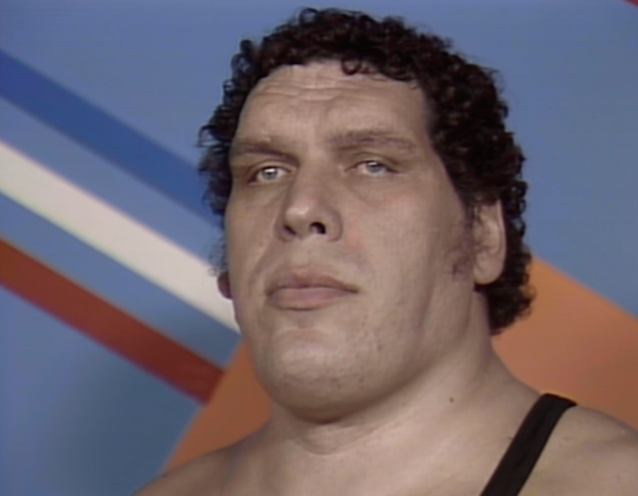
6, Andre the Giant. It’s sad to get to this point but Andre’s body was completely gone on him in 1987. He had no mobility. It was sad to watch him try to work. The WWF worked like crazy to hide everything they could, but it was just about impossible. He would only get worse after this, sadly.
7, Steve Doll. This one came as a shock to me but Doll is a terrible wrestler. I’ve seen him hidden away in the tag team Well Dunn but they were just jobbers. In 1987, companies were experimenting with the idea that Doll might be a star one day. They gave up on that pretty quick.
8, Dino Bravo. 1987 was the year Dino Bravo just gave up and gave in to working for the WWF. Dying his hair blonde and living with being a muscular midcard guy. Bravo, when he was younger, had more mobility but he’d taken too many steroids by 1987 and that mobility was long gone.
9, Dusty Rhodes. Well, he finally pushed me into this. Dusty’s abysmal performances in 1987 were borderline inexcusable. His match with Lex Luger at Starrcade especially. I have a lot of time for Dusty as a mouthpiece but his work, especially towards the tail end of his career, was embarrassing.
10, Jim Duggan. Gone are the days of Mid-South Jim Duggan, who was quite entertaining to watch. We’re in the WWF now. So it’s all kick, punch, HOOOO. Rinse, repeat. He became a cartoon.
WORST PROMOTION

1, AWA (2). Another dreadful year for the AWA, where they seemed to haemorrhage talent. Not even to the WWF, although they did lose Sherri, the Rockers and Hennig eventually. Nope, they were losing guys randomly to other opportunities. Scott Hall (NJPW), Vader (Germany), Larry Zbyszko (NWA), Jimmy Snuka (AJPW), Nick Bockwinkel (retired) etc, etc. The shows they were putting out were dreadful too. Not a semblance of anything exciting. It has gotten to the point where I dread their shows on my calendar!
2, WCCW/WCWA (1). The company was dead. Half the family was dead. Fritz’s dream had become a nightmare. In 1987 the only bright spot was Kerry von Erich returning from his motorcycle crash but, long term, the consequences of that are going to just as painful.
3, WWC. I watched a few matches from Puerto Rico and are generally fun, blood soaked affairs but an entire show? Hard pass. Everyone dogs those shows.
WORST MAJOR SHOW
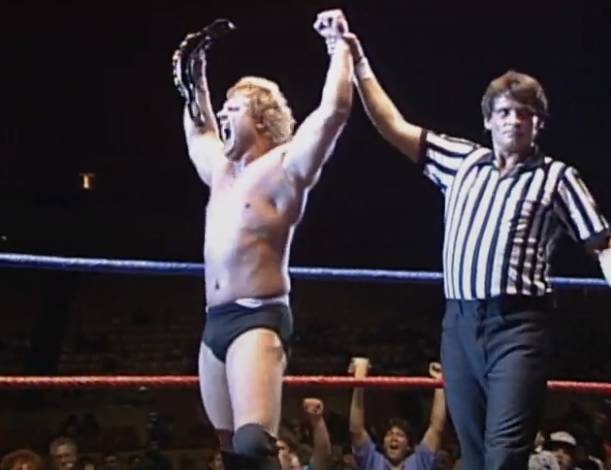
1, AWA Superclash II. Hennig vs. Bockwinkel almost (but not quite) saved this show. If you take that match away, the entire rest of the card is a disaster. Which gives AWA back to back ‘worst major show’ awards and they’re likely to pick one up for 1988 too.
2, WWC Anniversario. A brutal show to sit through. Everybody dogged it. Match after match of bad finishes and horrendous booking. At least it wasn’t as boring as Superclash II.
3, NWA Starrcade. A bad show overall but somewhat saved by Flair vs Ron Garvin going on last. At least they sent the fans home with a decent showing, which makes it better than Superclash II.
That’s it for 1987. Join me soon as I delve into 1988. WrestleMania IV, Andre’s title win, Ted DiBiase’s rise, the Megapowers, Clash of the Champions, Sting becoming a main eventer, AWA Superclash III, NJPW and AJPW race to crown an ace, UWF starring Maeda and Takada, Cactus Jack and Owen Hart are here. And much more besides. I am fired up!
 Twitter
Twitter